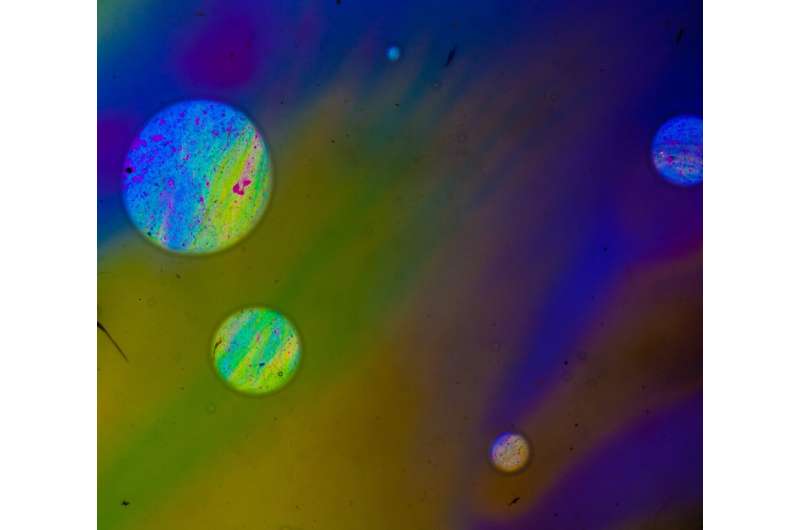December 10, 2019 report
Liquid crystal monomers used in LCDs found to be potentially persistent and bio-accumulative

A team of researchers from China and Canada has found that liquid crystal monomers (LCMs) used in LCDs could potentially be persistent and bioaccumulative. In their paper published in Proceedings of the National Academy of Sciences, the group describes their survey on industry products that have LCMs and what they found.
Smartphone screens use liquid crystal displays (LCDs), and most such displays are made with what are known as liquid crystal monomers—molecules that can react with other monomers to form polymer chains. But as the researchers with this new effort point out, little research has been done to find out what happens when LCMs make their way into the environment, or when they get into the human body.
In this new effort, the researchers sought to learn more about the persistence and bio-accumulativeness of LCMs in the environment. To that end, they studied 360 LCMs that are known to be used in LCDs. In so doing, they found that 87 could be persistent and bio-accumulative—and went so far as to label them "persisting organic pollutants." They noted that some LCDs persist for years or even decades. They suggest this represents a possible danger if they get into the environment, which could include the home or office. They note that prior research has shown that some of the LCMs that are used in LCDs could alter genes, leading to mutations.
The researchers also wondered about the effects of LCMs on living creatures. To get an idea of the impact, they tore down used smartphones to get at the LCMs in the screens. They exposed embryonic chickens to the LCMs and found that it led to genetic changes. Next, they surveyed the air in a host of sites, including hotel rooms, classrooms and apartments. They found traces of LCMs at every site they tested—evidence that LCMs are actually leaking out of portable devices as they are still being used. They acknowledge that they do not know what exposure to low levels in the atmosphere is doing to people, but suggest the science community needs to find out.
More information: Huijun Su et al. Persistent, bioaccumulative, and toxic properties of liquid crystal monomers and their detection in indoor residential dust, Proceedings of the National Academy of Sciences (2019). DOI: 10.1073/pnas.1915322116
Journal information: Proceedings of the National Academy of Sciences
© 2019 Science X Network



















